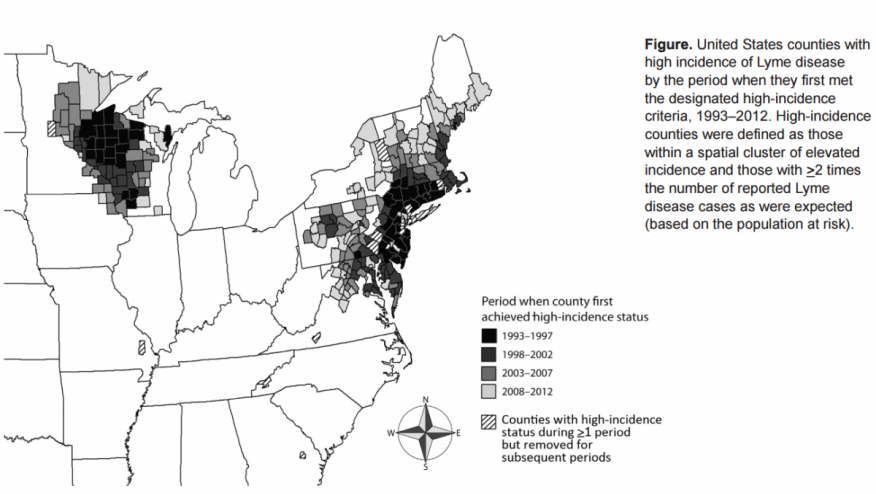Lyme Disease 2022 Save

The CDC has updated its Lyme disease surveillance report based on a new case definition. Compared to 2017–2019, the number of cases in 2022 rose by 69%.
While the relative change in incidence was shown to increase with patient age, the increase in Lyme disease cases in 2022 likely reflects changes in surveillance methods rather than change in disease risk. The revised surveillance case definition in 2022, allows high-incidence jurisdictions to report cases based on laboratory evidence alone, without need for additional clinical information. Approximately 90% of all cases are reported from 15 high-incidence jurisdictions in the Northeast, mid-Atlantic, and upper-Midwest regions
Lyme disease, a tickborne zoonosis caused by certain species of Borrelia spirochetes, is the most common vectorborne disease in the United States.
In 2022, there were 62,551 Lyme disease cases were reported to CDC, 1.7 times the annual average of 37,118 cases reported during 2017–2019. Annual incidence increased most in older age groups, with incidence among adults aged ≥65 years approximately double that during 2017–2019.
Before 2022, national surveillance for Lyme disease required the collection of clinical information, most often coupled with laboratory evidence of infection, to classify cases. As the number of Lyme disease infections has increased, the workload associated with collecting clinical information has proven prohibitive in several high-incidence jurisdictions, leading to the adoption of modified, jurisdiction-specific surveillance practices, including in New York and Massachusetts.
Surveillance in low-incidence jurisdictions still necessitates clinical investigation to ascertain probability of locally acquired infection to accurately guide clinical and public education. The revised approach to surveillance will improve standardization of surveillance data across high-incidence jurisdictions but precludes robust comparison of trends with data collected using earlier case definitions.
After implementation of a revised surveillance case definition in 2022, the number of reported Lyme disease cases in the United States increased 68.5% over the average reported during 2017–2019; in high-incidence jurisdictions, the number of cases increased 72.9%, whereas in low-incidence jurisdictions, the number of cases increased 10.0%. This change reflects a large increase in the number of cases reported from high-incidence jurisdictions on the basis of laboratory evidence alone. Before 2022, many of these cases would have been excluded, either because health departments were unable to obtain the necessary clinical information or because available clinical data were inconsistent with the objective criteria specified in the case definition.
Although the total number of reported cases is higher than in previous years, it still does not approach the estimated 476,000 Lyme disease diagnoses estimated to occur annually in the United States (2), a frequency that highlights the need for effective prevention methods.










If you are a health practitioner, you may Login/Register to comment.
Due to the nature of these comment forums, only health practitioners are allowed to comment at this time.